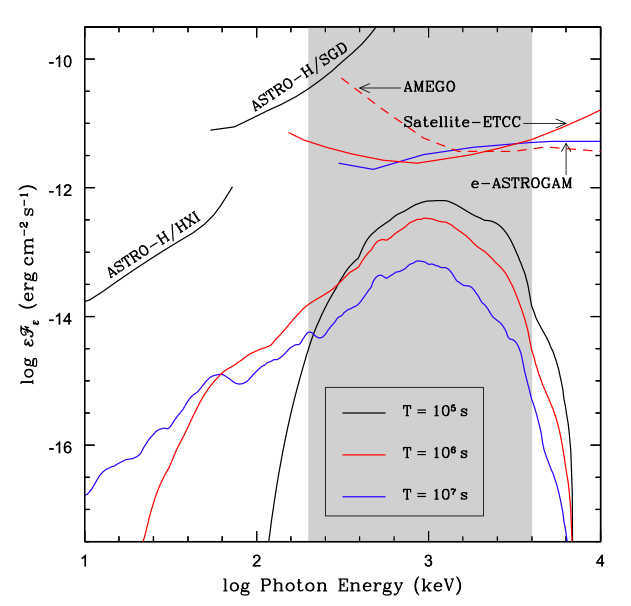

Gravitational waves and electromagnetic radiations from a neutron star merger were discovered on 2017 August 17. Multiband observations of the optical transient have identified brightness and spectrum features broadly consistent with theoretical predictions. According to the theoretical model, the optical radiation from a neutron star merger originates from the radioactive decay of unstable nuclides freshly synthesized in the merger ejecta. In about a day the ejecta transits from an optically thick state to an optically thin state owing to its subrelativistic expansion. Hence, we expect that about a day after the merger the gamma-ray photons produced by radioactive decays start to escape from the ejecta and make it bright in the MeV band. In a paper published in Astrophysical Journal in 2019, I studied the features of the radioactive gamma-ray emission from a neutron star merger, including the brightness and the spectrum, and discussed the observability of the gamma-ray emission. I found that more than 95% of the radiated gamma-ray energy is carried by photons of 0.2-4 MeV, with a spectrum shaped by the nucleosynthesis process and the subrelativistic expansion of the ejecta. Under favorable conditions, a prominent pair annihilation line can be present in the gamma-ray spectrum with the energy flux about 3%-5% of the total. For a merger event similar to GW170817, the gamma-ray emission attains a peak luminosity of ≈ 2 × 1041 erg s-1 at ≈ 1.2 day after the merger and fades by a factor of two in about 2 days. Such a source will be detectable by satellite-ETCC if it occurs at a distance ≲ 12 Mpc.
The above figure shows the averaged energy flux spectra of the gamma-ray emission produced by radioactive nuclides in a "typical model" for neutron star mergers. The energy flux spectra are averaged over an observation time of 105s (starting from t = 0.6 day; black curve), 106s (from t = 0.5 day; red curve), and 107s (starting from t = 0.5 day; blue curve). Sensitivity curves of some detectors (with 3σ detection) are shown, including ASTRO-H/(HXI, SGD) (105s; black line), satellite-ETCC (106s; red line), e-ASTROGAM (1 yr; blue line), and AMEGO (106s; red dashed line). The gray shaded region encloses the photon energy range of 0.2-4 MeV, which contains more than 95% of the observed gamma-ray energy. [For details see L.-X. Li, Astrophys. J. 872, 19 (2019).]
 Back to Li-Xin Li's Web Page
Back to Li-Xin Li's Web Page